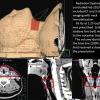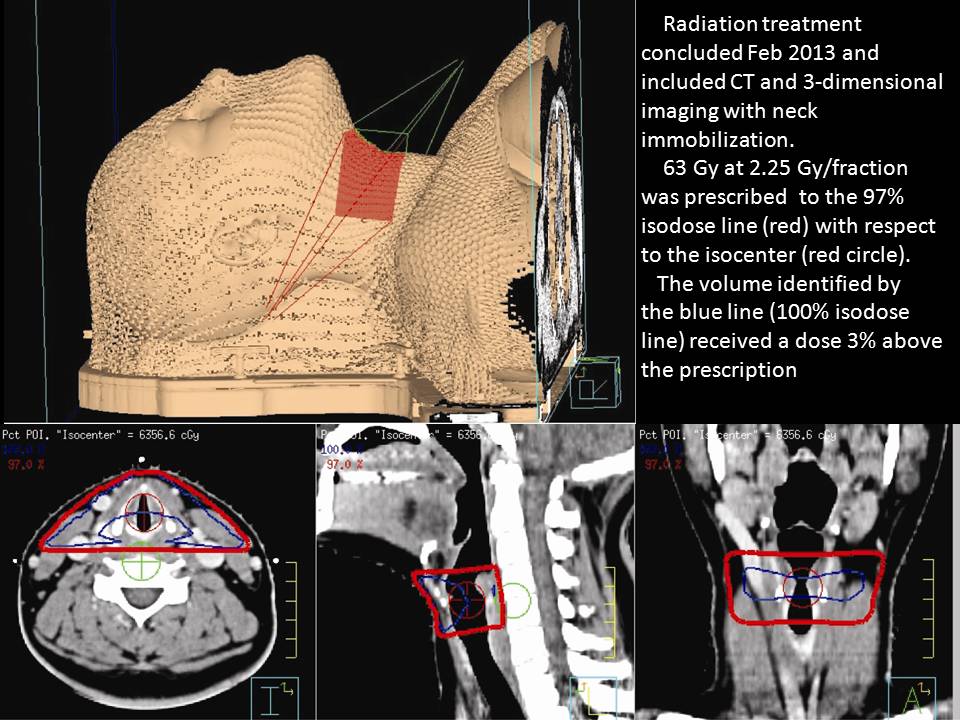click on image above to enlarge; advance with cursor over lateral border
see also: Management Consideration Radiation Induced Malignancy in the Head and Neck and Laryngeal leukoplakia white plaques on vocal cords
Case Example
Sep-2011 First Oto Clinic Visit with dysphonia for preceding 1 year. Moderate dysphonia (G2R2B1A0S2)
self-rated negative impact of voice problem on life = "6" out of 6 (0 = no negative impact; 6 = profound negative impact)
with elevated reflux symptom index + tobaccao use (greatest amount = 1 pack per week)
Ddx: Chronic laryngitis. Possible laryngopharyngeal reflux, possible laryngeal candidiasis, possible vocal fold hemorrhage
Rx: Reflux precautions, reflux medications, trial of diflucan
Nov-2011 Followup clinic visit 6 weeks later. Moderate dysphonia persists. Imaging similar.
Ddx: Chronic laryngitis. Rule out papillomatosis vs cancer.
Nov-2011 Microdirect laryngoscopy under general anesthesia
Biopsy: left vocal cord = invasive moderately differentiated squamous cell cancer
subsequently evaluated (paraffin embedded specimen) as positive for high risk HPV
slightly irregular Z-line (G-E junction) biopsied: 'mild non-specific chronic inflammation'
Feb-2012 Followup clinic visit last day of XRT (63 gy)
Dysphagia and dysphonia; modify omeprazole to liquid; maintaining weight
Mar-2012 Followup clinic visit 6 weeks after completion of radiation
Vocal quality improved 'better than before irradiation'
Nov-2012 Followup including voice clinic appt with dysphonia only mild (G1R1B0A0S0)
self-rated negative impact of voice problem on life = "1" out of 6 (0 = no negative impact; 6 = profound negative impact)
Yearly Long-Term Followup to 11 years and 5 months post-irradiation in thumbnails above
Diagnosis, Treatment Planning, and Response to Treatment |
|---|
|
Diagnosis made from bx at time of microdirect laryngoscopy |
|
Treatment planning |
|
Larynx seen in clinic on last day of XRT and one year later |
|
Appearance of neck on last day of irradiation and one year later |
|
Larynx before irradiation and 15 months after |

